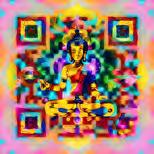

























OMTimesMediaisamultiplatformpublisherandaleader inconscious,holistic,and spiritualmedia.Itaimsto redefinetheparadigmofmedia bycombiningprintanddigital contentwithafocusonholistic livingandspiritualwellness.
OMTimes Media represents a comprehensive and integrative approach to media, focusing on content that uplifts, educates, and connects individuals who are passionate about a conscious, spiritual lifestyle.
OMTimes emphasizes content that nurtures personal growth, spiritual enlightenment, and holistic well-being. This includes articles, features, and resources on topics like mindfulness, yoga, spirituality, wellness, and sustainable living.
Inredefiningitsservices,OMTimesMediaoffers diversecontentandcreatesacomprehensive ecosystemforindividualsseekingaholisticand spirituallyalignedlifestyle.Thismultifaceted approachcaterstoarangeofpreferencesand learningstyles,deepeningtheimpactoftheir mission.
OMTimeslikelyprovidesadvertising opportunitiesforbusinessesandpractitioners intheholisticandspiritualspace.Thiscould includemagazineads,sponsoredcontenton theirdigitalplatforms,andpromotional segmentsintheirpodcastsorTVservices.
CommunityTrust:Advertiserscouldbenefitfrom thetrustandnicheaudiencethatOMTimeshas cultivated,reachingpotentialcustomerswho arespecificallyinterestedinconsciousliving andspirituality.
While it began as a magazine, OMTimes has expanded its reach through various digital platforms. This includes an online presence with digital articles and resources, social media engagement, and multimedia content like Live Radio, podcasts, and OMTimes TV and videos.



The Power of the Moon in the Astrological Houses 94
The Path to a Galactic Life: Embracing Authenticity and True Self
Wu Wei: The Wisdom of Water and Stones
Your Literary Fingerprint: Your Memoir
Book Spotlight - The Dragon That Never Sleeps

















OMTimes Book Spotlight service is a specialized promotional tool designed to highlight and elevate books within the spiritual and conscious living community.
By leveraging OMTimes' extensive network and platforms, authors gain increased visibility and credibility, reaching a targeted, engaged audience eager for meaningful, transformative content in line with their interests.






OMTimes Magazine is a Monthly PublicationfromOMTimesMedia,INC.
OMTimesMediaInc.isA502Company. AcompanyfullyOwnedby CathedraloftheSoul, a501-C(3), anIRSRegisteredCharity.
Christopher Buck
Publisher
A magazine publisher manages the business side, overseeing production, distribution, marketing, and financial aspects, ensuring the magazine's profitability and alignment with market trends and audience interests.
The Editor-in-Chief oversees a publication's content, guiding editorial vision, managing the team, and ensuring accuracy, quality, and adherence to ethical and stylistic standards.
Executive director of Art
An Executive Director of Art oversees the artistic direction of projects, managing creative teams, ensuring visual coherence, and aligning artistic output with organizational goals.
An Executive Editor directs a publication's editorial strategy, supervises content creation, manages editorial staff, and collaborates with senior management to ensure quality and consistency.
Advertisement and related Queries Advertisement and related Queries
OMTIMES MAGAZINE OMTIMES MAGAZINE INQUIRY@OMTIMES.COM INQUIRY@OMTIMES.COM
OMTIMES RADIO OMTIMES RADIO CONSCIOUS.RADIO@OMTIMES.COM CONSCIOUS.RADIO@OMTIMES.COM
OMTIMES WEB TV OMTIMES WEB TV INQUIRY@OMTIMES.COM INQUIRY@OMTIMES.COM
Editorial Inquiries: Editor@omtimes.com Editorial Inquiries: Editor@omtimes.com

OMTimes Social Media TV Distribution And syndication Excellence & Concierge Service
Tv & Radio Integration



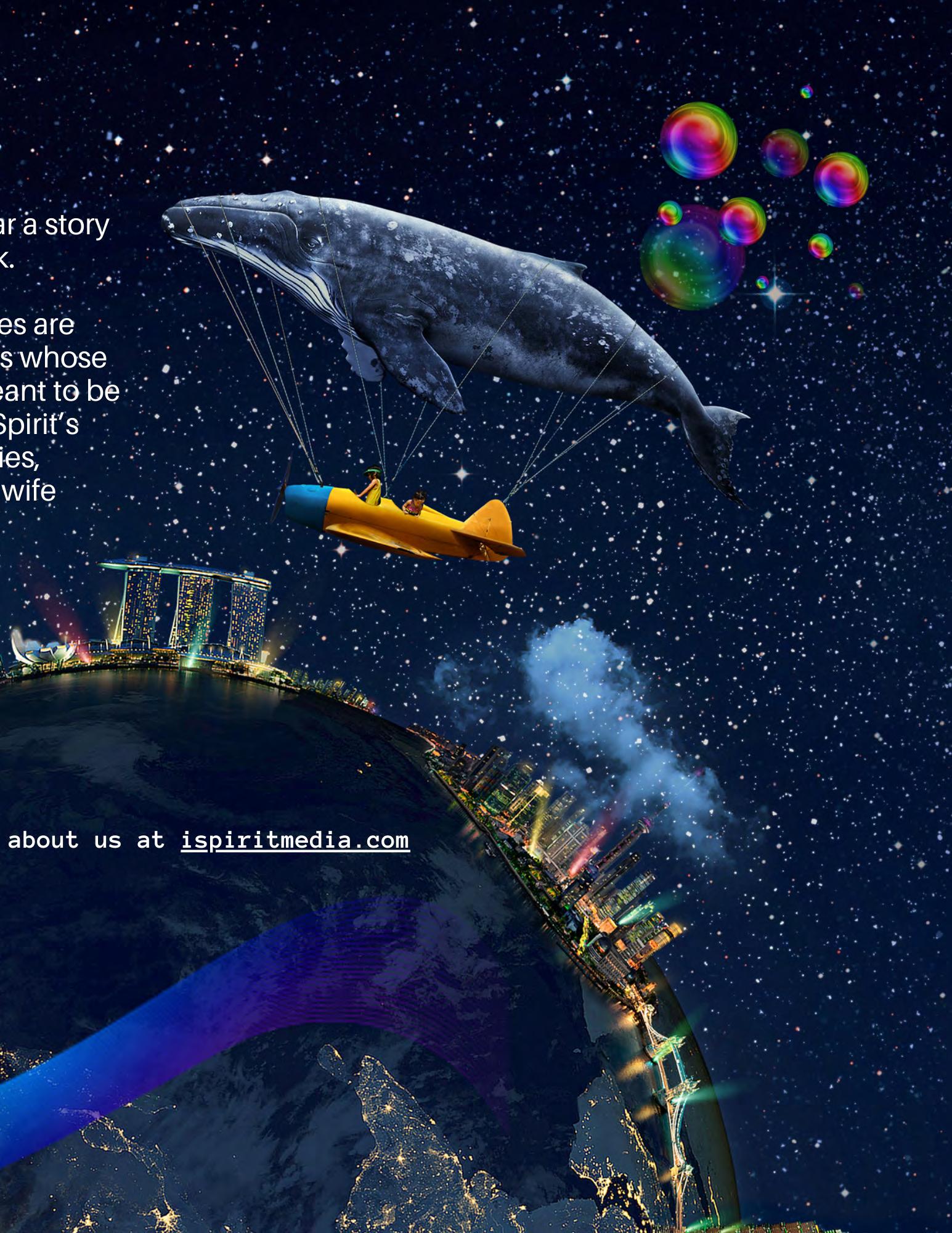

TheRev.Dr.IyanlaVanzant,bestsellingauthorandTVhostof"Iyanla FixMyLife,"spokewithSandie Sedgbeeraboutherchallengeto awakenonemillionpeople.
Following the recent eclipse, astrologers say wecanexpectatsunamiofawakening. While this can only be a good thing for humanity, awakening can also be a somewhat destabilizingorchallengingprocessforthose whohavenoideawhototrustorwheretogo for the best tools and information to guide themontheirjourneyofself-discovery.
One person who has had the prescience to address this rapidly growing need for a safe space that offers a selection of tools, techniques,modalities,processes,interviews, and information for the spiritually hungry seeker is one of America’s most celebrated new thought spiritual teachers and inspirational public speakers—the Rev. Dr. IyanlaVanzant.



An internationally best-selling author and much-loved host and executive producer of the critically acclaimed award-winningTVseries“IyanlaFixMy Life,” Iyanla Vanzant met with Sandie Sedgbeer for two on- and off-air conversationsinwhichshesharedher latestchallengetoawakenonemillion people,andtotalkaboutasubjectthat has
Nowbecomeastand-aloneprogramhelpingmen understandandgaininsightsandsolutionstodepression andanxietybasedontheactorCourtneyB.Vance’s seminalbook,TheInvisibleAche: BlackMenIdentifyingTheirPain andReclaimingTheirPower.


SANDIESEDGBEER:Iyanla,welcome,andthankyouforjoiningus.AwakeningOne Million?I’mcurioustoknowwhetherthisnewendeavorwasaslow-burningideaor iftherewasonedefiningmomentwhenyousaidtoyourself,‘That’sit!Wecan’tgo onlikethis.It’stimetostartwakingpeopleupandprovidingthetoolsweallneedto expandourConscioiusness?
IYANLA VANZANT: It was really divine guidance.Imean,Ididn'twakeupovermy coffee one morning and just say, ‘Oh, let me go wake up 100 million people.’ It was through prayer and meditation, that I got that as my directive for this next season of life.
SANDIE SEDGBEER: You know, when these directives come— the few times they’vecomeforme—andI’velookedat the picture that seems impossible, and you think, ‘No way! I don’t want to undertakethat!’
IYANLAVANZANT:Well,Iwasalittlemoreseverethanyou.Isaid,“Iamnotdoingthat. Iamnotdoingthat.“Andthenwhenitcomesbythethirdtime,I'velearnedhowtobe obedient.Becauseifyou'renotobedient,thenyougettosacrificesomeotherpartof yourlife.ButwhenIsatandthoughtaboutit,Imeantwhatadivineopportunityto participateintheawakening—theself-acceptance,theself-awareness—in celebration,theloveofonemillionpeopleandgettingthemtoparticipateintheirown processofevolution,healing,andgrowth. Andit’sreallyveryexciting.
SANDIESEDGBEER: Youregardtherecenteclipseasthedivinereset.We’veallgone backtofactorysettings. So,whatarethosesettings?
IYANLAVANZANT:Yes, I've been telling my students it's a factory reset. And for many of us that means we have the inspiration and drive to learn some new things that will replace the things that we're letting go of, and really awaken to a new way of being and doing.
SANDIESEDGBEER: Didyounoticemanychangesintherun-uptothisevent?
IYANLAVANZANT:I’m seeing many people waking up. When the student is ready, the teacher appears. And when the student is really ready, the teacher disappears, and the student becomes their own teacher.
SANDIESEDGBEER: Yes.TellmemoreaboutAwakenOneMillion.Whatkindof websitewillitbe?Whatwillitoffer?
IYANLAVANZANT:Somethingforeverybody!Whenwetalkaboutawakeningone million,everybodyisinadifferentplace.Andwhatarethetools?Whatarethe resources?Whatarethebooks?Whoaretheteachersthatwecanintroduceand supportateverylevel?So,awakeningonemillion—we’reofferingayear-long program,ayear-longprocessthat,hopefully,willtakeyouintothenext,five,ten, fifteenyearsofyourlife.


But wherever you are on your spiritual path of healing, growth, and self-discovery, we havesomethingforyouatfourlevels.
Level1-Awake is free, but there are things you can pay for if you want. This is the basic level for those who are looking to do things like establish a daily spiritual practice, that’s basic.Orifyouwanttoknowmoreaboutspirituality,what’sthefirstbooktoread?Whois agoodteachertogoto?Etc.
We offer resources, practices, processes, prayers… I’ve made some recordings, so if you likemyvoice,Icanguideyouthroughthebasics.
Level2-Awakenisforthosewhohavedonesomework,andknowthere’smore.Nowyou really want to dig in, embody everything you’ve learned, and make the work a more integratedprocess,notsomethingseparatefromtherestofyourlife.Youwanttodeepen your spiritual practice and develop a more intimate relationship with the source of your understanding—Buddha,Jesus,etc.,developaninnerauthority.
Level 3-Awakening, where you’ve now got to be serving the world. You’ve got to be out there doing something. I don’t care if you want to host a book club, or if you save animals, or work in the environment. So many people walk around with a wealth of knowledge and they don’t know how to share that, so we want to support them in teacher training, sharing. And sometimesthedirectiveorthesharingisn't just about writing. Sometimes, it's just about living your life every day, the way you approach people, how you speak to them and deal with them, so that you are a demonstration and they see you and they just want some of what you have. So maybe you can take them to lunch, or maybe you can start a study group. Maybe you go into an elderly home or hospital. It doesn'thavetobesomethingbigthatgets you a million followers on social media. It's just how do I integrate, practice, and demonstrate what I know and who I am in a way that serves and supports other people.

And then there’s Level 4, which is the Master level where, as a master, you possessexceptionalexpertiseandinsight, and it’s now your turn to inspire and guideothersontheirjourneys.
SANDIE SEDGBEER: Are you collaborating with other spiritual teachers?
IYANLA VANZANT: Anyone and everyone. Because, you know, I don't haveitall.AndI'mnotforeverybody.But thereareotherteacherswhodo.Spiritual people in politics, economics, religion, education, and health, and we can bring themalltogether.
You know, I’m looking at my relationship with myself, my relationship with others, and my relationship with the world. How do I awaken and celebrate and serve, grow,andhealinallofthosefourareasof God, Self, others, and the world? There are teachers who are masterful in all of these areas. Some people will vibrate toward books, others toward music, otherstowardphysicalactivityviayogaor exercise. Some are looking for nutrition. Youknow,whenyouwakeup,whenyou arelovingyourselfinadifferentway,you wanttoeatacertainwayandyouwantto know about that. So, yeah, I'm really excited about other teachers and other perspectives.
SANDIE SEDGBEER: How do you see your role in this? Will you be presenting events? Conducting interviews? Or will youjustbemanagingit?
IYANLA VANZANT: I’m the midwife. I come, I coach, I remind you to breathe. I’mnottheretohavethebaby;I’mthereto support the person and the baby. The babyistheprocess,theprogram.
SANDIE SEDGBEER: This is an enormous undertaking, and a great dealofwork. Doesthatnotdauntyou?
IYANLAVANZANT:Iamblessedwithan incredible team. I have the vision, but they find the way to execute it. And that’s those divine relationships. So many of us intheworldtoday whoare wakinguptothingswewanttodo,we thinkwehavetodoitallalone. Butwe don’t.
SANDIE SEDGBEER: So, the website comprisesaprogramcomprisesalevel that’s completely free, and other levels if I want to engage, and I can start cherrypickingthepathwaysandthings thatinterestme?
IYANLA VANZANT: One of the things that everybody can do is to pick a principle. You pick a letter, and it’s going to give you a universal principle andadefinition.Maybeallyouwantto do is learn how to incorporate that principle into your life. Whether it’s trust, forgiveness, or non-judgmental acceptance, celebration, or victory, whateveritis,everybodycangetthat.
SANDIE SEDGBEER: Tell me about your “Creating a Living Vision” program?
IYANLA VANZANT: One thing that keeps people from manifesting their vision is the unfinished business. so what's your unfinished business? Did yougetthedivorce?Didyoufinishthe degree?Didyouforgiveyourmotheror whateveritis?Andthat'sreallywhereI find a lot of people get stuck in that unfinished business, because you know, you can't rise if you’ve got so muchweightholdingyoudown.
OMTIMES MAGAZINE

SANDIE SEDGBEER: You re-wrote the 12 Steps of AA? Why?
IYANLA VANZANT: Yes. The beauty of waking up is self-awareness, so this is awakeningtoyourself.We’vetakenthe 12 steps of Alcoholics and Anonymous and transcribed them into everyday principlesforeverydayliving.Whereare you in your personal growth, development,healing,learning,etc?
Areyoustepone?Stepfour?Stepnine? Step ten? And how do you apply that? We'renotgoingtotellyouthatbutyou can look at the various levels and see whetheryou’reatlevelone,twoorthree —Awake, Awakening, or Awakened— and say, “Okay, this is where I am. I'm interestedinthisorthat.”


Maybeyouwanttoworkonestepaweek or one step a month and go through the year. Italldependsonwhereyouare,and howyouwanttoapproachyourlearning. Buteverythingislaidoutforyou,andyou gettochoose.Idon’twanttotellyouhow tochoose,becausechoiceispower.
You can do any level you want. At any time. There will be workshops, classes, some live, some pre-recorded, you can self-study over the course of six, eight, or twelveweeks.
There's one program called “From the Ground Up” for people who know that their foundation—physical, mental, emotional,orspiritual—isnotsolid.

Youcandoanylevelyouwant. At any time. There will be workshops, classes, some live, some pre-recorded, you can self-studyoverthecourseofsix, eight,ortwelveweeks.
There's one program called “From the Ground Up” for people who know that their foundation—physical, mental, emotional, or spiritual—is not solid. That's a six-week, selfdirected program. You spend a week building your physical foundation, your money, your relationships, home, or career. You'llspendaweekdoingyour mental foundation. What are your thoughts? How are you thinking? What do you need to do to reprogram your mind, your emotional foundation? What are some of the things you’re still holding on to that need to be cleansed? What is yourspiritualfoundation?That's a self-directed study that you can do at any level because all levels are open to everyone. Some programs and processes have a price. Others don't. Again,yougettochoose.
SANDIESEDGBEER: Thewords “Awake, Awakening, Awakened and Awoke” have become so loaded, their meanings so tarnished of late. Have you had anykickbacksfromthat?
IYANLAVANZANT:Notreally,becauseIhave aclearintention.Andwehaveanintentionfor the definition for each of those words. And, you know, Sandie, one of the things that we have to heal ourselves of is allowing other peopletotelluswhattothink.There'savery powerful statement that those who control the words and images control the minds of the people. And the people who are controlling the words and images are telling us that “woke” and “awakening,” and the woke community are bad. They’ve made being“woke”somethingbadandnasty.And that’s not it at all. We don't have to embrace that. We can restructure it. It’s to really be awake to the truth of their being, to the process of life and the universe, to be awake to their unique signature, their genius, their purpose and their frequency. We can restructureit. whichwehavedone.SoIdidn't havetoinventaword.


SANDIE SEDGBEER: I am intrigued byanothernewprojectformenthat you’ve launched, which began as a virtualbookclubformen,andisnow available as a stand-alone program based on the book The Invisible Ache—Black Men Identifying Their PainandReclaimingTheirPowerby theactorCourtneyB.Vance. Which, ofcourse,isn’tjustaboutblackmen, orevenmeningeneral,butallofus, too.
IYANLA VANZANT: Yes. Courtney B. Vance is the husband of Angela Bassett. His book, The Invisible Ache has set men on their heels because. Nobody knew that even at the height of his career he was suffering almost catatonicdepression.

The rate of depression and suicide among men, particularly men of color, is skyrocketing. So I hosted a five-week book club to walk men throughTheInvisibleAche.Andyou know we could take that and broaden it to everybody. We’ve all gotaninvisibleache.
Somepeopledon’thavealanguage for it, but it’s there… you know, something isn’t quite right. But becauseyoucan’tspeakit,orseeit, youignoreit. Youdenyordiminishit and then you have breast cancer or prostatecancer.
Too many of our sons, brothers, fathers, and friends are suffering silentlywithanxiety,depression,and the echoes of the traumas that haven’tbeenputintowords.Yetitis time to give their and their experienceavoice.
So the Invisible Ache program is a conversationabouttheinteriorlives of men that is designed to support theminfindingstrength,notshame, in seeking the light that will neutralizethefeelingofbeinglost.
The stats are hard-hitting: a sharp rise in mental health issues postpandemic, with too few seeking the help they deserve and require. Perhapsit’stheweightofappearing strong, the fear of admitting vulnerability, or the absence of a spacewheresuchtruthscanbeheld with the respect they are due. The InvisibleAcheVirtualBookCluband the program are our commitment to bridging the gap and filling the space.
Weneedtobecomeawaketoanew levelofrelationshipwherethere’sno more power over/power under. This inequalityinrelationships…wehave got to meet everybody eye to eye, soultosoul,spirittospiritsothatwe can build our relationships, whether it’s love or family or business—in a newway.
We’ve got to wake up to a new way to be together. We cannot continue likeweare.
We are calling men not just to be a participant in a book club—but part of a pivotal national movement and taking a major step toward embracing and embody self-care. With stories brought to life by Courtney B. Vance and clinical insightsbyDrRobinL.Smith.
So we invite anyone… if you know a mean between the ages of 18 and 65 seeking a deeperunderstandingofhismentalwellness —what it is, how you find it, keep it and expand it, this process can provide the answers he is seeking. These answers are especiallyvitalformenwhohavenavigateda world that often asks them to shoulder more than their visible burdens and to keep quiet aboutit.

Asyouprobablyknow,healingcannolonger be a solo adventure—it’s a collective quest. Women tend to gather, to share, and to heal together.It’stimetoencouragementodothe same.Yes,CourtneyB.Vanceisablackman. Yes,thebooksharestheexperiencesofblack men.Andwebelievethatallmen,regardless of nationality, can benefit from the process andinsights.Thefacilitatorshavewalkedthis path. They’ve felt the pain, the loss, and they’veemergedwithstoriesthatinspireand motivate. This isn’t about prescribing answers; it’s about starting the kind of dialogue that leads to life-changing introspectionandgenuinechange.
SANDIE SEDGBEER: Iyanla Vanzant. Thank you.

Iyanla Vanzant’s new Awaken One Million portal website launchesinJuly2024.Formore information about Iyanla’s books,podcasts,audios,events, and transmutation newsletter, visithttps://www.Iyanla.com

Health and Healing encompass practices and knowledge focused on maintaining, restoring, and enhancing physical and mental well-being through various therapeutic and holistic approaches.




By Humanity Healing
Elevate your energetic vibration and improve your health with these top ten foods! Explore the benefits of organic foods and the importance of raw fruits and vegetables in increasing vibrational frequency.

Rverything in life emits a frequency, from plants to human beings. This frequency is connected to the level of vibration of our energy. You know those days when you feel more cheerful and positive? On those days, you are healthier, and your energetic vibration is higher. Equally, more negative days are related to lower vibrational levels. For your well-being, we've listed ten foods capable of increasing your vibrational frequency!
Let food be thy medicine and medicine be thy food Hippocrates
The high level of pesticides in some foods can decrease their energetic frequency, making organic foods an excellent option to meet and increase your energy needs.
Raw fruits and vegetables contain vital micronutrients responsible for blood circulation in our body. There is a fluid

inside the cells of these foods called zeta potential, which, when found in low amounts in the human body, prevents the elimination of toxins and the transfer of nutrients from foods, making the body prone to certain diseases.
The balance of magnesium and calcium in the body is responsible for controlling certain hormones. Excess calcium releases hormones that remove calcium from the bones and transport it to soft tissues, destroying
certain cells. Conversely, magnesium moves calcium from soft tissues back to the bones, where it belongs.
When food is heated, its frequency increases and then decreases until it completely stops, causing the death of the food — and, consequently most of its nutrients. Moreover, when we eat cooked foods, our white blood cells increase, trying to defend us from the toxins ingested from heating the food instead of fighting against real threats.

When we are sad, discouraged, or even sick, we feel apathetic and even unwilling to live. It is known that all living organisms emit light; thus, you, I, and that plant in the park are all emitting a certain number of photons — particles that form light — or, in other words, biophotons. Contact with the earth and the flourishing of life are useful for reestablishing this connection. Moreover, when you plant and cultivate the seeds, you amplify their nutritional value by 20,000 times. These seeds allow us to absorb all
nutrients quickly, promoting body revitalization.
Teas are a great option to replace milk. Knowing the medicinal properties of each is a great way to ensure wellbeing and consequently, a good mood.
This vinegar is great for combating inflammation food poisoning, promoting body rejuvenation, and balancing the pH of the blood and

skin. Besides all this, it is a diuretic and excellent for those looking to lose weight.
Green Tea
This tea is special; in addition to delaying aging, being a diuretic, and a great combatant of cholesterol, it is also rich in bioflavonoids and catechins — substances that prevent cellular changes or, in other words, prevent tumor formation.
Chlorella
This food is a true miracle; it combats infections, malnutrition, and obesity, balances the digestive and epithelial
systems, relieves stress, and helps in the healing of damaged tissues.
The act of putting into your mouth what the earth has grown is perhaps your most direct interaction with the earth.
Frances Moore Lappé
Stevia
This plant, being very famous, ended up being a victim of counterfeiting. It can be found as a dark powder or used in its leaves for tea preparation. It is great for preventing and combating diabetes, constipation, fatigue, stimulating metabolism, and reducing

pressure, and is also a great option to replace sugar as it is a calorie-free sweetener.
It is more than clear that good nutrition is the secret to a healthy life, but, much more than that, cultivating this type of diet is a great way to increase the body's energetic vibration, making us feel more cheerful, happy, and welldisposed! Ready to venture with these foods? Just don't forget to tell us in the comments the effects you felt!
This could lead us to conclude that to maintain health standards from the cellular level to the general level,
we should preferably consume whole foods, living foods that have more enzymes, bioelectric energy, bioluminescence, bioactive electrons, biophotons, phytonutrients, elevated vibratory fields, and overall vital energy. When we consume living foods, we commune with the vital energy of the planet, immersing ourselves in the energy of the food as an expression of the creator. The ideal diet in this line should be individualized, giving preference to living, organic, locally grown, vegan foods, highly mineralized, low in calories, with good hydration.
A food prepared with love, consumed with awareness and gratitude.



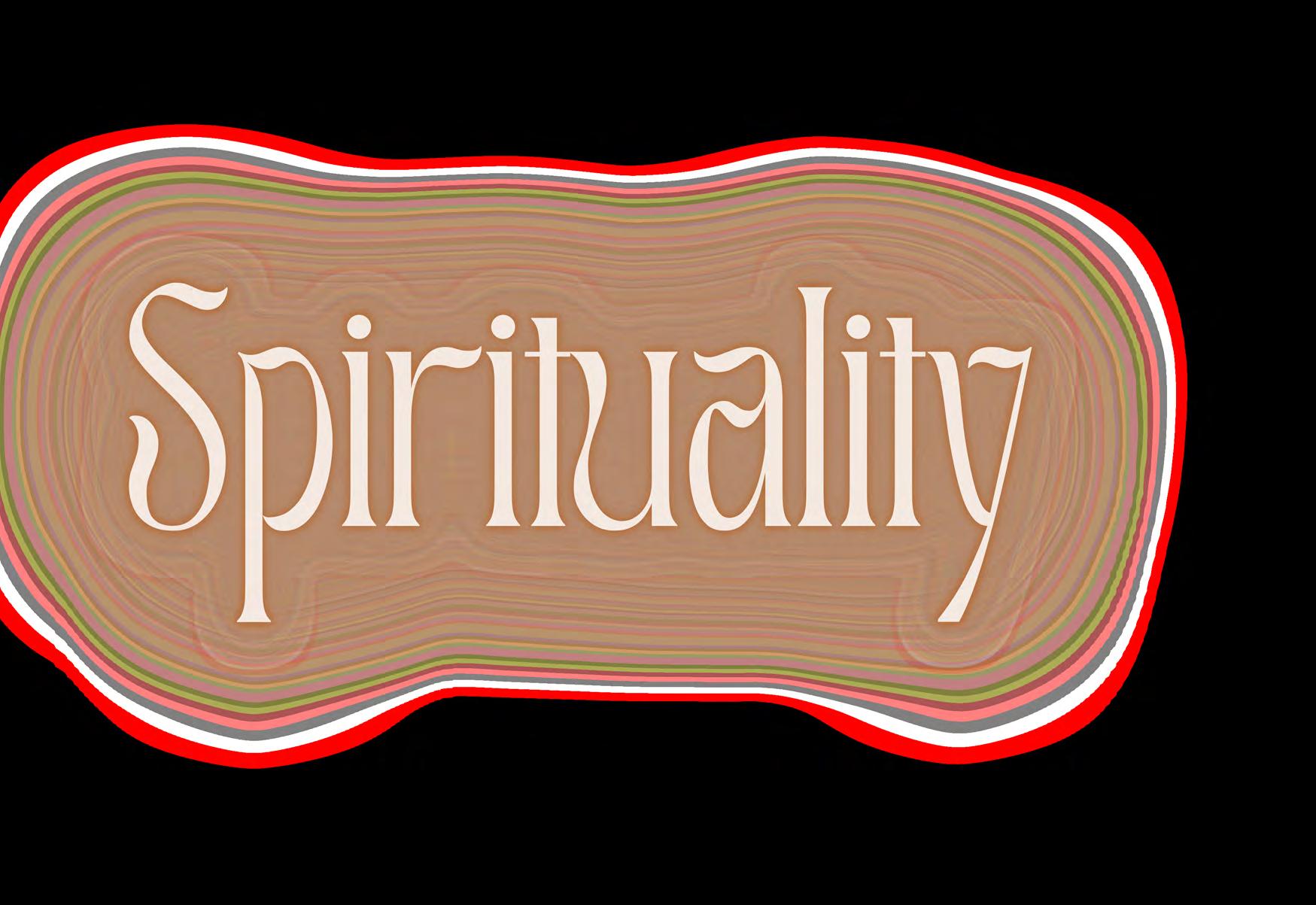

Spirituality involves exploring one's Spirituality involves exploring one's Spirituality involves exploring one's inner self, seeking deeper meanings, inner self, seeking deeper meanings, inner self, seeking deeper meanings, connecting with the transcendent, connecting with the transcendent, connecting with the transcendent, and understanding life's purpose and understanding life's purpose and understanding life's purpose through various philosophical, through various philosophical, through various philosophical, religious, and personal beliefs. religious, and personal beliefs. religious, and personal beliefs.

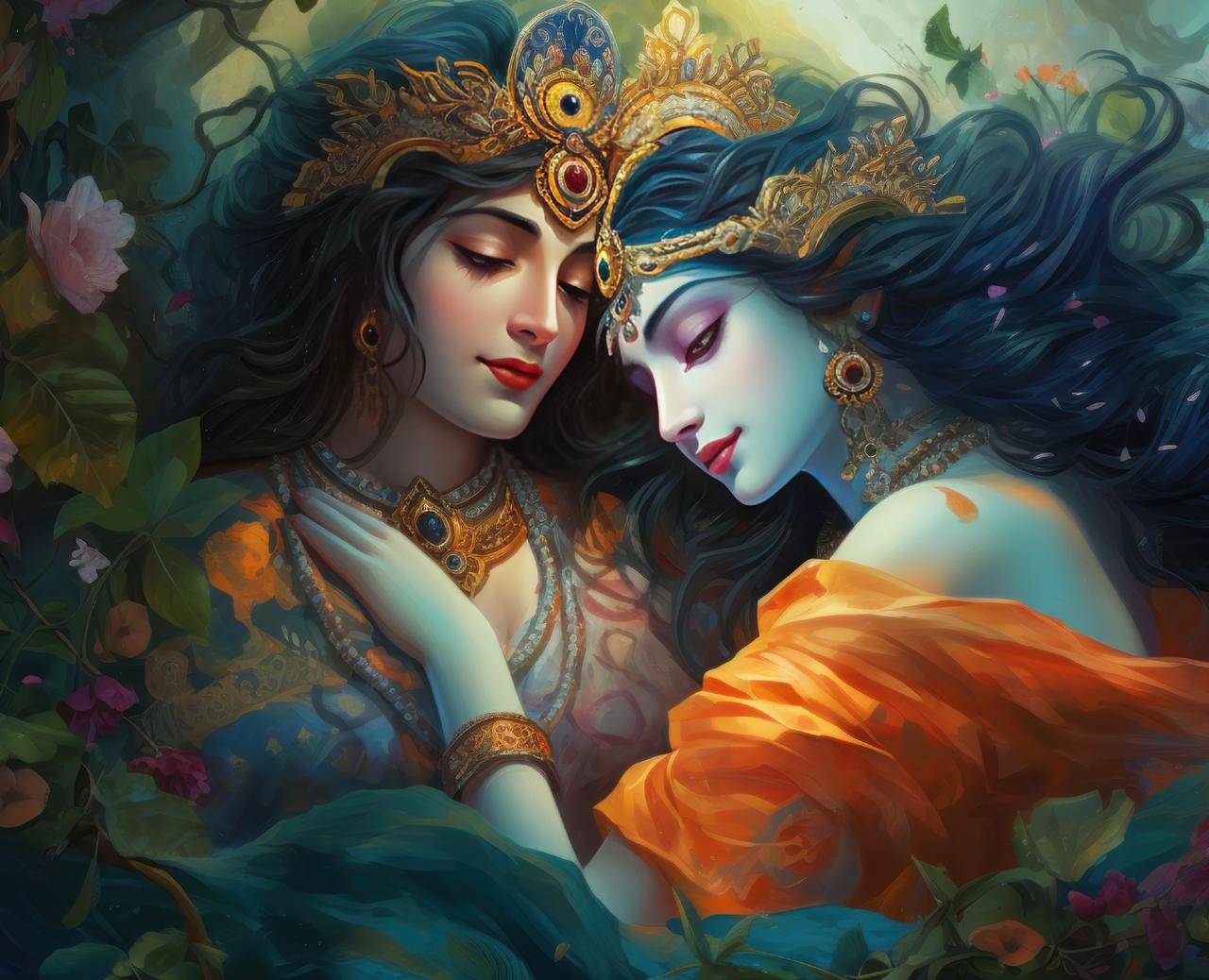
WHY THE LOVE STORY OF RADHA AND KRISHNA HAS BEEN TOLD IN HINDUISM FOR CENTURIES
By Jeffery D. Long (Published via The Conversation (US Edition))
Llthough it originated as a Christian holiday [in honor of St. Valentine, Valentine’s Day has become a global celebration of romantic love, observed by people of many religions and of no religion.
Other religions have long had their own myths centered on love. In my work as a [scholar of Hinduism, Jainism, and Buddhism I have observed that in Hindu traditions, there are many stories of divine couples: deities who embody the ideal of love, and whose tales often contain lessons for the rest of us. One couple that has especially captured the imagination of Hindu devotees for centuries is Radha and Krishna.
The story of Radha and Krishna is first found in the Bhagavata Purana, a text dated by scholars somewhere between the fifth and 10th centuries. Their story is further elaborated in the Sanskrit devotional poem “[Gitagovinda],” authored by Jayadeva, who lived in the 12th century in Eastern India.
on which textual tradition you read, as an avatar, incarnation of Vishnu, or as the Supreme Being himself. In Hindu belief, [Vishnu preserves the order of the cosmos, often through taking on an earthly form to right some wrong and to set the world back on the correct course when chaos threatens to overwhelm it.
The life story of Krishna is an exciting one, full of adventure as well as tragedy. When Krishna is born, his evil uncle, a king named Kamsa, orders all of the male children of the kingdom who are born on that night killed, not unlike King Herod in the New Testament. This was due to a prophecy that one of those children would put an end to his reign. Krishna’s parents, however, are warned of this impending calamity, and the baby is spirited away to safety.
Krishna, a highly popular and beloved Hindu deity, is regarded, depending
Krishna, who was born to royalty, had a humble upbringing, growing up amid the cowherds and cowherdesses, or gopis, of the bucolic region of Vrindavan. Stories of Krishna’s teenage years, in particular, are greatly beloved by his devotees. This was a relatively carefree time in Krishna’s life when he engaged in playful mischief with the gopis and wandered the forests

This tragic story is dear to devotees because of the very real human feelings it evokes and because of its deep theological significance in the Vaishnava tradition – the Hindu tradition in which this story features most prominently.
of Vrindavan playing his flute. All of the gopis fell in love with Krishna, and he was with them, but the one with whom he fell in love the most deeply was named Radha.
An air of tragedy overshadows the story of the love of Radha and Krishna. The two cannot be together, as Radha is already married, and Krishna has a great destiny ahead of him. When the time comes, Krishna must leave Vrindavan and overthrow his wicked uncle. He also plays a key role in the fight between two groups of warring brothers, the Pandavas and the Kauravas.
To some, the love between Radha and Krishna might appear adulterous or scandalous, given that she is married. The focus of the tradition, though, is not so much on this scandal but on the deep, spontaneous, genuine love that it illustrates. Radha’s love for Krishna is so strong that it is willing to fly in the face of social conventions. She is willing to risk the disapproval of her community for this love. And according to Vaishnava theology, this is how individuals’ love for God should be. True love for God – called bhakti, or devotion – should be characterized by wild abandon. It should be spontaneous and free.
In Vaishnava theology, the gopis represent the many jivas, or souls, that dwell in the universe, while Krishna is Ishvara, the Lord, the Supreme Being. A very popular and beautiful artistic depiction of the relationship between
Krishna and the gopis is called the “Ras Lila.” It depicts the gopis dancing in a circle. Each of them has Krishna as a partner. He has used his divine power to multiply himself to dance with each Gopi individually.
When Krishna finally has to leave Vrindavan, Radha feels the pain of separation is almost unbearable. When she asks Krishna why she has to feel such pain, he tells her that she must learn to see him in all beings, for he dwells in the hearts of all. The individual soul’s sense of separation from God is similarly painful and is believed to be a particularly powerful manifestation of bhakti. But that separation can be overcome by seeing God in all beings and in one another.
As Krishna also says in the Bhagavad Gita“I am never lost to one who sees all beings in me and who sees me in all beings, nor is that person ever lost to me.”
The story of Radha and Krishna can, therefore, be enjoyed on Valentine’s Day on two levels: as a sad and poignant tale of a past youthful love, remembered fondly but left behind by the call of adulthood, but also as

an invitation to be open to love in all its forms.
Jeffery D. Long does not work for, consult, own shares in, or receive funding from any company or organization that would benefit from this article and has disclosed no relevant affiliations beyond their academic appointment.
Originally Published here: https:// theconversation.com/why-the-lovestory-of-radha-and-krishna-has-beentold-in-hinduism-for-centuries-198716
Copyright © 2010–2024, The Conversation US, Inc.
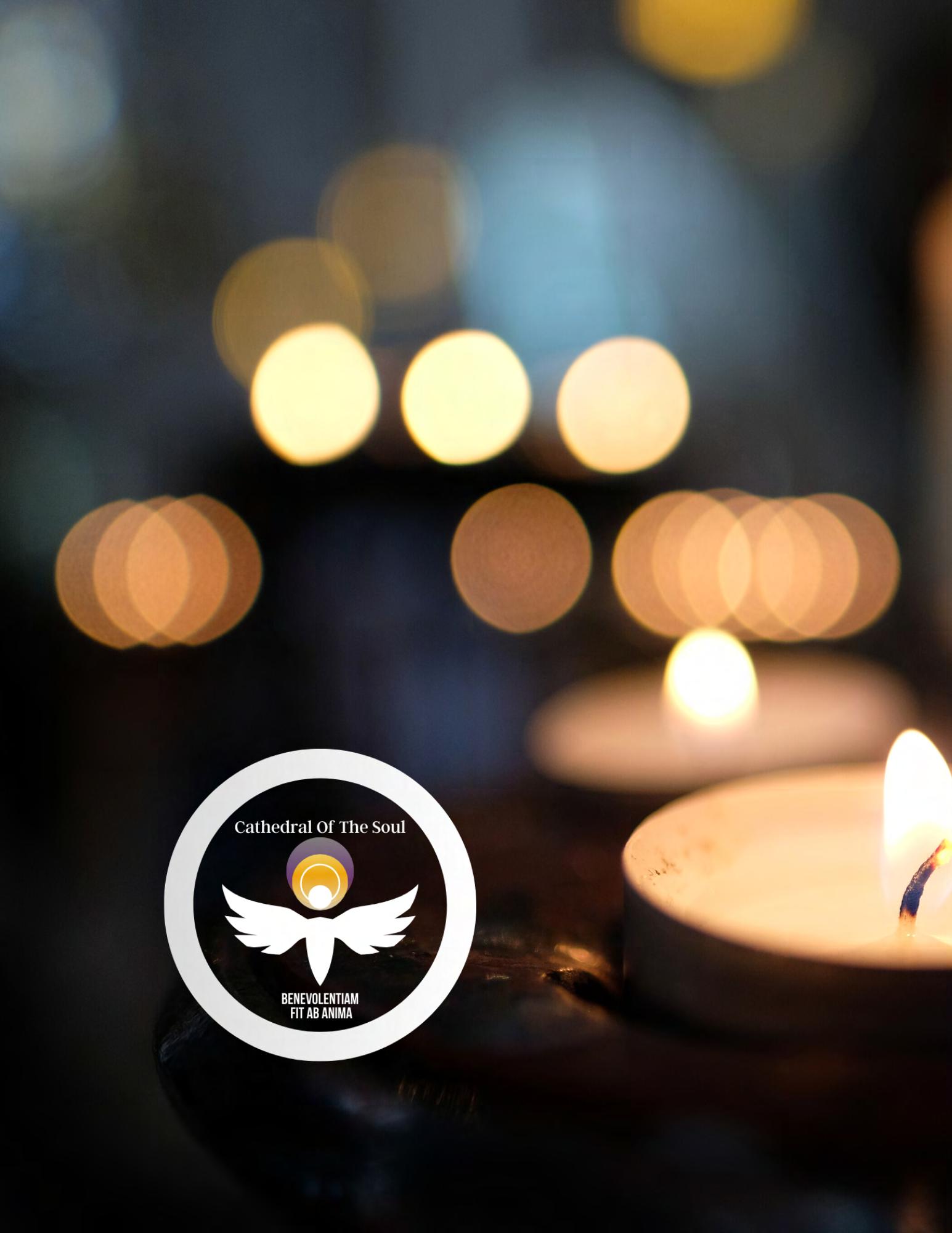


By OMTimes
Dive into the fascinating world of Limbic Resonance: the remarkable ability to feel and comprehend the emotions of others. Explore how this phenomenon influences our behavior, emotions, and bonds with those around us.
Limbic Resonance is the capacity of mammals to tune in to the internal manifestations of others. It's the ability to feel and even understand what another feels, a phenomenon that can be described as physical, anatomical, psychological, and spiritual.
The ability to apply Limbic Resonance facilitates the reading of the emotions of the people around us in such a way that we intensify our sensitivities and perceptions of the feelings and emotions of those in contact with us. It is a "non-verbal" capability that allows the adaptability of our behavior without hurting or offending the emotions of those around us.
This process happens when we are face to face and look into other people's eyes as if it were "love at first sight." Other examples of Limbic Resonance include what we feel as "butterflies in the stomach" when the heart races and we can't control it. Mothers and fathers feel it when they need to wake up in the middle of the night to calm their children. When the eyes of parents meet the eyes of their crying babies, and suddenly they quiet down, that is Limbic Resonance.
Unlike animals, such as a turtle that pulls its head and limbs into its shell, humans are social beings constantly exercising Limbic Resonance. With every visual or sensory contact, we are releasing this process into our lives. This tuning, as we may call it, regulates our emotional expressions and is fundamental for the beginning and maintenance of relationships.
The state of empathy, or being empathic, is to perceive the internal frame of reference of another with accuracy and with the emotional components and meanings which pertain thereto as if one were the person.
Carl Rogers
Limbic Resonance is a brainemotion process (Reason – Emotion) with immediate physical and mental unfolding. The exchange between people happens in milliseconds. It's a look, a touch, a gesture, a sensation, and suddenly, we are connected in the process of Limbic Resonance. It's something wonderful. It affects the heartbeat, hormonal regulation, immune functions, and all the characteristics of sleep, including REM sleep.

The more we exercise Limbic Resonance, the more it shows that we are in love with people and ourselves. In contrast, low Limbic Resonance is the cause of barriers between people and the alienation of oneself and others in our lives. Interestingly, as children (from infancy), there is within us an incessant search for the process of Limbic Resonance from parents, as it is believed that not yet knowing the external world and its possibilities, we live attached to our parents, and this is fundamental for our development as a person and learning of life's conservation
and pleasures. However, as we start the process of independence and reduce dependence on our parents and caregivers, we lose "part" of this physiological and spiritual process of Limbic Resonance.
The detachment from the process of Limbic Resonance can be the cause of deep pains that I call "pains of the soul" and consequently produce traces of depression and anxiety. When we stop looking at people and lose sensitivity to life's issues, we run the risk of deviating from the normal path of life. As a result, we become illtempered, sad, anxious, and develop psychosomatic illnesses.
However, when we are seeking (consciously or unconsciously) the process of Limbic Resonance, we can develop a good mood, giving colors to life's memories, creating possibilities for life's issues, opening a world of opportunities, observing perceptions of oneself and others, reducing judgments, and increasing affection with other people, ultimately creating a desire for interdependence and mutuality, generating an intrinsic desire to live in community and communion with people.
Of course, with the advent of social networks, we have lost some of this process, as we are living in a new era and need to adapt to these realities. I do not believe the world will go back, but we will be increasingly consumed by technology and digital information. Therefore, it becomes essential to nurture friendships and family relationships.
Limbic Resonance is a wonderful process that we can revive within ourselves and perhaps learn every day, and with those around us, that sensitivity and emotions are passed from person

to person and that we are whole within everything. We cannot live in isolation but in collectivity, harmony, and love.
We are much more than reason; we are emotion and spirituality. We are infinitely more than we imagine, for whoever created us gave us something greater than we can conceive. Each person has within themselves a divine spark that can light up themselves and as many sparks as they can.
All changes are within us. All of us can live through this process called Limbic Resonance.

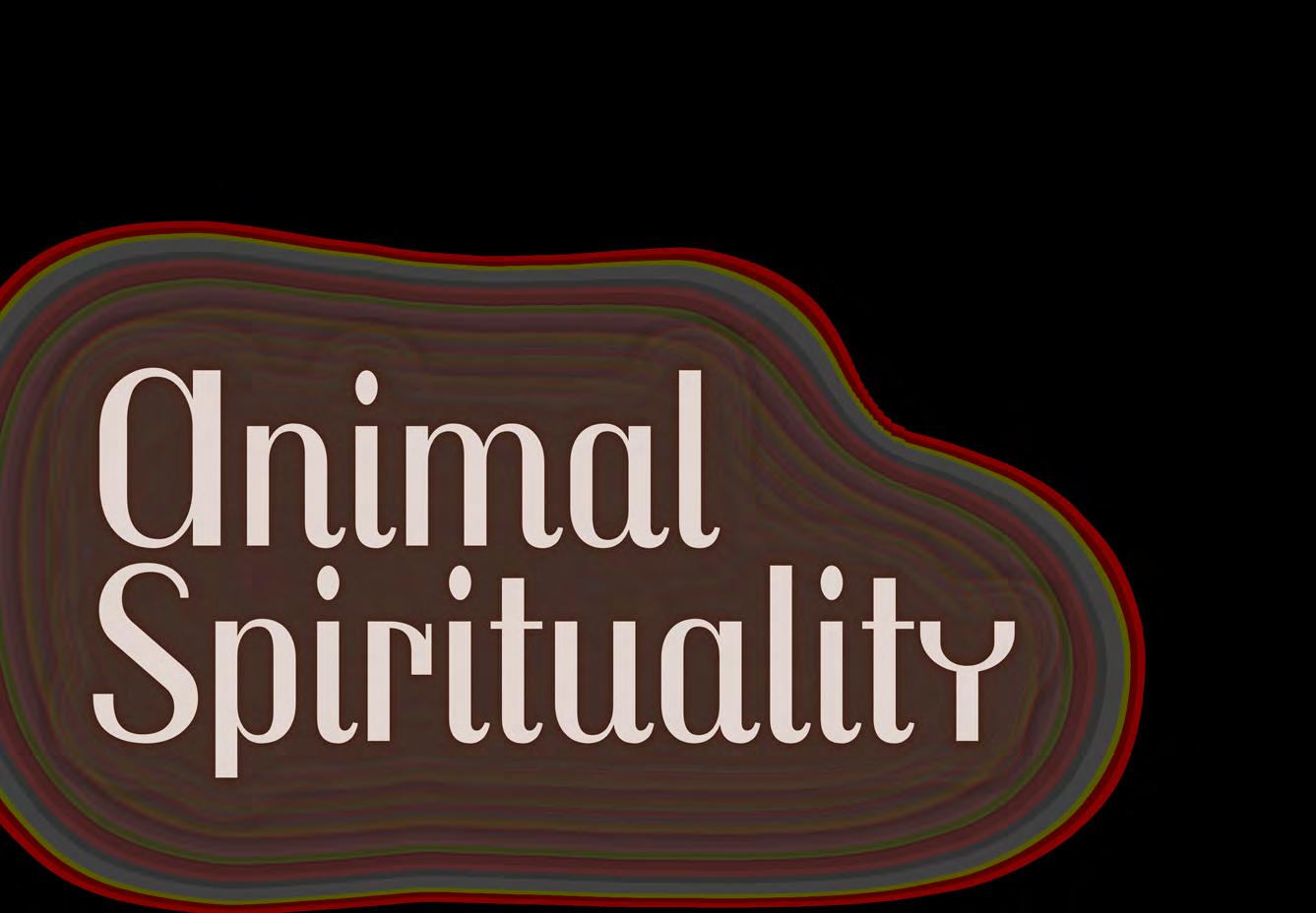
Animal spirituality explores the deep,mysticalconnectionsbetween humans and animals, recognizing animals' souls, their roles in spiritual practices, and their contributions to our holistic wellbeing.


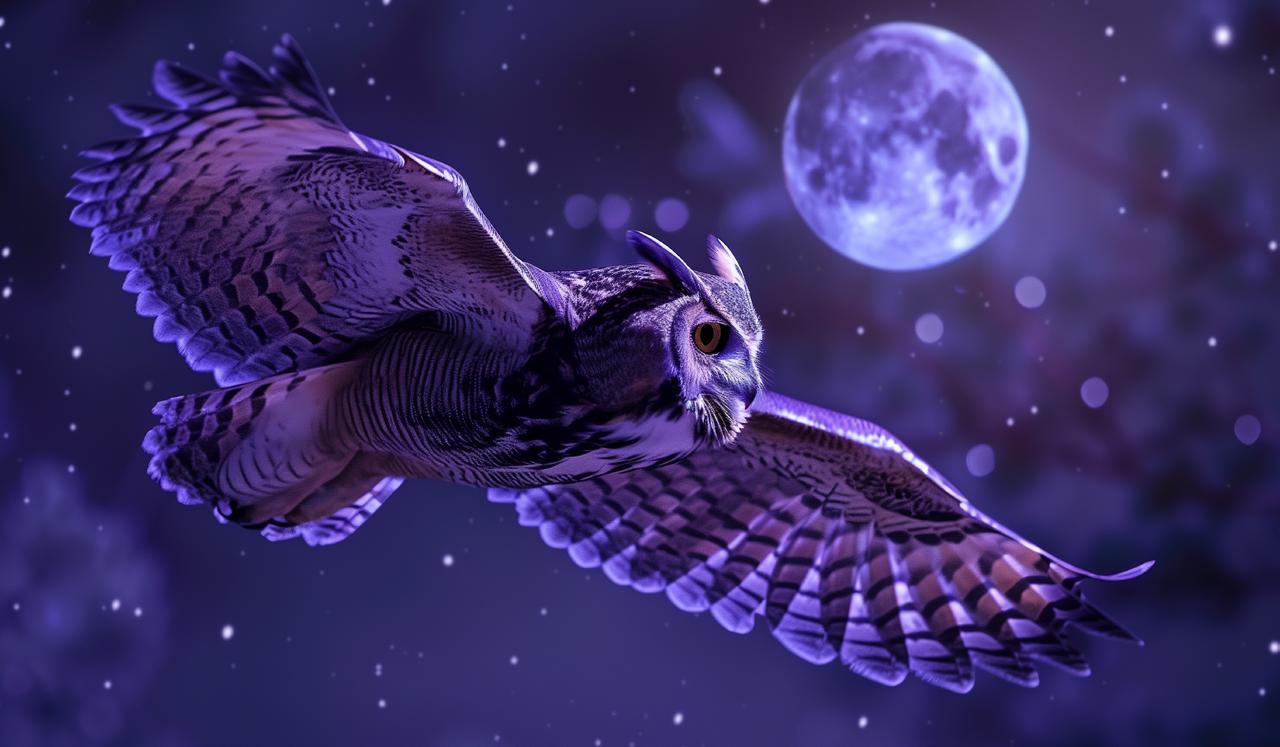
By Ministry Earth
Lmbark on a journey into the mystical realm of animals, where their symbolic qualities and energies intertwine with cultural and spiritual traditions. Gain wisdom, guidance, and a deeper connection to the natural world through their sacred presence. The mystical energy behind animals extends beyond their physical
presence, touching the realms of cultural, spiritual, and psychological symbolism. This concept is particularly profound in shamanism but is also evident in many other cultural and spiritual traditions worldwide. Each animal is believed to embody specific qualities and energies, offering insights, guidance, and reflections on human life and the natural world.
Different cultures have revered animals as sacred beings, symbols of clans or tribes, and even as incarnations or messengers of deities. In Native American cultures, for example, spirit animals are integral to individual identity and communal lore. Similarly, in Hinduism, animals like cows, elephants, and monkeys hold religious significance and are seen as embodiments of certain deities.
Animals are often viewed as spirit guides or totems in shamanism. Shamans, or spiritual healers, enter trance states during rituals to communicate with the spirit world, often invoking animal spirits for guidance, healing, or protection. Each animal spirit is believed to impart unique wisdom or skills to the shaman and those they heal.

In psychology, particularly in the context of dreams and Jungian analysis, animals often represent different aspects of our subconscious. They can symbolize our innate instincts, repressed emotions, or untapped potential. For instance, a lion might represent courage or authority, while a snake could symbolize transformation or hidden threats.
Meditating on specific animal qualities can aid personal development in many spiritual paths. For example, embracing the qualities of the wolf can help foster

a sense of community and loyalty, while contemplating the attributes of a bear might assist in developing introspection and self-care.
The reverence for animal spirits fosters a deeper connection with the natural environment. Recognizing the sacredness of animals can lead to a greater appreciation for all life forms and an understanding of the interconnectedness of the ecosystem.
Animals feature prominently in global art and folklore, often carrying symbolic meanings. From the cave paintings of prehistoric times to
modern literature and film, animals have been used to convey complex ideas, emotions, and cultural narratives.
Animals play significant roles in astrology and mythology. In various astrological systems, like the Chinese zodiac, animals represent specific years and are believed to influence the personalities of individuals born in those years. Mythological creatures, often part animal, serve as powerful symbols in many cultural myths and legends.
Animal-assisted therapy is a testament to the healing power of
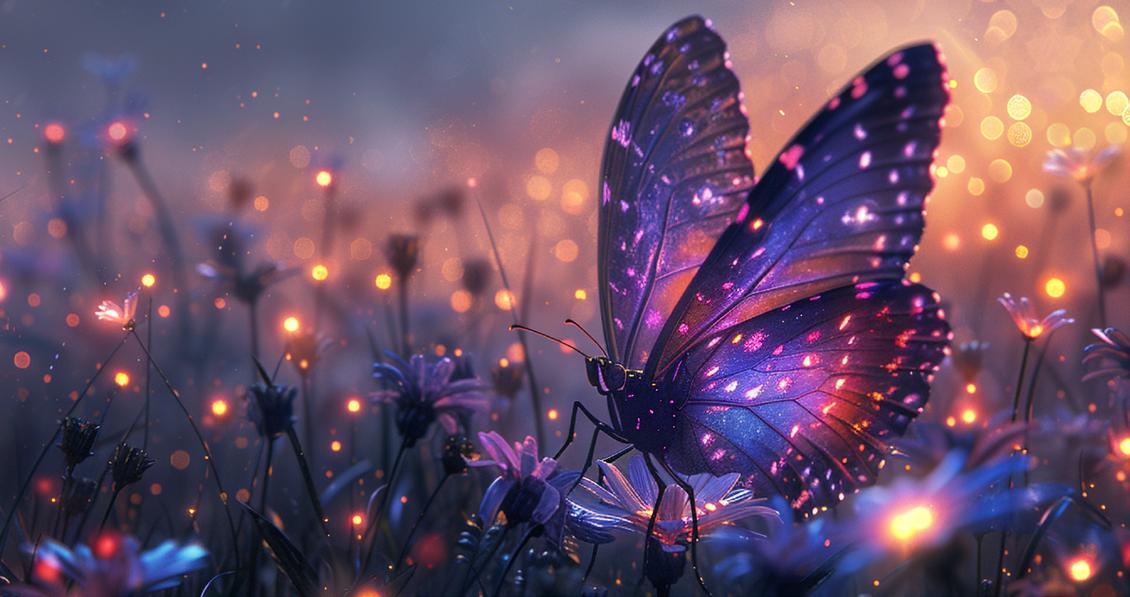
animals. The presence of animals can have a calming effect, reduce stress, and facilitate healing in therapeutic settings.
HERE'S AN EXPLORATION OF THE SYMBOLIC MEANINGS ASSOCIATED WITH EACH ANIMAL
Whale: Symbolizes knowledge and wisdom that endures through history. Whales represent roots and origins, signifying records and stories that connect humanity with nature.
Bee: Bees embody group organization and the exchange of information for harmonious
coexistence. They live in communities, constantly helping each other, bringing harmony and balance to their group.
Snake: Snakes are associated with healing and adaptation. Their ability to change habitats and shed their skin signifies renewal and the power of flexibility.
Spider: Spiders, like artists, create webs to sustain themselves. They demonstrate patience, calmness, and determination in building their lives.
Butterfly: Butterflies represent transformation. Their life stages

symbolize the phases of life, depicting various moments that lead to freedom.
Owl: Owls are symbols of knowledge and wisdom. Their broad and advanced vision suggests the benefit of looking beyond the obvious and seeking new perspectives.
Wolf: Wolves, known for their pack lifestyle, represent team spirit and respect for their environment. They symbolize the importance of family bonds and loyalty to their group.
Panther: Panthers symbolize courage and power. Agile and smart, they analyze situations, assert dominance in their territory, and fearlessly take action.
Hawk: Hawks, with their keen vision, easily perceive nature's signals and learn from their environment.
Bear: Bears represent the ability to look inward and respect one's body and mind. Their hibernation signifies a time of renewal and preparation for life's tougher phases, showing strength in facing challenges.

Dolphin: Dolphins are associated with love and joy. These animals are known for their happiness and approach their activities with fun.
Tiger: Tigers are cautious predators, observing situations carefully to identify the right moment to strike with precision.
Jaguar: Jaguars are strong protectors of their space and family. They are vigilant against potential threats and fearless in combating anything harmful.
Fox: Foxes are known for their quickness, symbolizing the ability to act with intelligence and agility. They balance reason and emotion with a finely tuned sense of perception and strategic behavior.
Each animal carries a unique set of symbolic meanings and energies, often serving as spiritual guides or totems in various cultural practices, particularly in shamanic traditions. They offer metaphors for human behaviors and attributes, inspiring us in different aspects of life.



By Ministry Earth
Dxploring the relationship between the full moon and animal behavior, shedding light on the reasons behind their changes.
Many myths and fables are associated with the Moon's effects on animal behavior, especially the suggestion that certain species become somewhat erratic during
periods of a full moon. Everyone has h eard stories about how animals change according to the phases of the Moon, potentially becoming more aggressive or entering reproductive cycles.
Researchers interested in these distinctive animal habits try to understand the possible relationships between these behavioral changes and the lunar cycle. Generally, it has been discovered that there is a direct correlation between the events, but for reasons much less supernatural than we might like to hear.
The full moon provides stronger nocturnal illumination, assimilated and interpreted differently by each species. For some animals, the event may mark the time for synchronization of cycles (reproductive or hunting). For others, the full moon's light may facilitate visual communication at night, which can be useful for predators and a concern for their prey.
Check out some of the most interesting changes in animal behavior caused by the lunar cycle:
Lions and other predators attack more in the week following a full moon. This occurs because the early hours of the night are darker in the week after the full moon, and lions are hungrier due to unsuccessful hunts during the brighter nights of the full moon.
With the increased darkness of the new moon, when the Moon is between the Earth and the Sun in such a way that the side facing us does not receive direct sunlight, badgers take advantage of this to mate more safely. And the way they prepare for this moment is by marking territories with urine. It is, therefore, during this lunar phase that they raise their legs more frequently.
Bats, including the species of vampire bats that feed on blood, attack less on nights of high brightness. This occurs as a form of preservation, as they would be more visible to predators on full moon days.

The effect of the Moon on the activities of nocturnal mammals has been well documented for some species, such as rodents in the deserts of North America and Israel. In experiments involving the presence of a predator such as an owl and lightning simulating a full moon, certain rodents eat less and seek to stay in more protected places, that is, areas with more vegetation. On the other hand, some animals show no concern for the luminosity on full moon nights.
An example can be found in kangaroo rats (such as those in the genus Dipodomys), so named because they move on two legs and by hopping. They seem more efficient in detecting their predators, as they only avoid
open environments when the predator is present. Thus, they do not alter their behavior based on indirect signs of predation risk (like lunar illumination), as quadrupedal rats do. Additionally, it has been found that kangaroo rats have more efficient hearing than other rats, as their tympanic bullae (bony cavities housing the middle ear) are larger, making them more sensitive to certain sounds produced by predators.
Every year in December, corals along the Australian coast synchronize the largest release of eggs and sperm on
Earth. Although various environmental factors also influence the event, such as temperature, salinity, and food availability in the waters, researchers have discovered that the level of lunar irradiation plays a fundamental role.
A study reported in the Journal of the American Veterinary Medical Association, which analyzed 11,940 cases from the Colorado State University Veterinary Medical Center, revealed that during the Full Moon, there was a 23% increase in cat visits to the vet and a 28% increase in dog treatments. This happens because they tend to get into more mischief during this period. Scientists have been unable to find an explanation for this change in behavior, but pointed out that it may occur because these animals spend more time outside the house during the Full Moon.
Nightjars, also known as nighthawks, are birds that fundamentally depend on vision to find their prey (generally insects). For this reason, they see better on full moon nights and avoid going out on darker days.

One of the most interesting phenomena related to animal behavior and the lunar cycle occurs with scorpions. These arachnids glow according to the intensity of the moonlight. As they are nocturnal hunters, this characteristic of the species serves as a tool for scorpions to know if it is safe to leave their burrows.
Considering these facts, we can conclude that the Moon plays a much larger role than just being a bright celestial body in the sky. Thanks to it, both the oceans and the fauna and flora can develop and thrive in nature.


Relationships as a category examine Relationships as a category examine Relationships as a category examine the dynamics, challenges, and growth the dynamics, challenges, and growth the dynamics, challenges, and growth opportunities in human connections, opportunities in human connections, opportunities in human connections, including romantic, familial, platonic, including romantic, familial, platonic, including romantic, familial, platonic, and professional interactions. and professional interactions. and professional interactions.
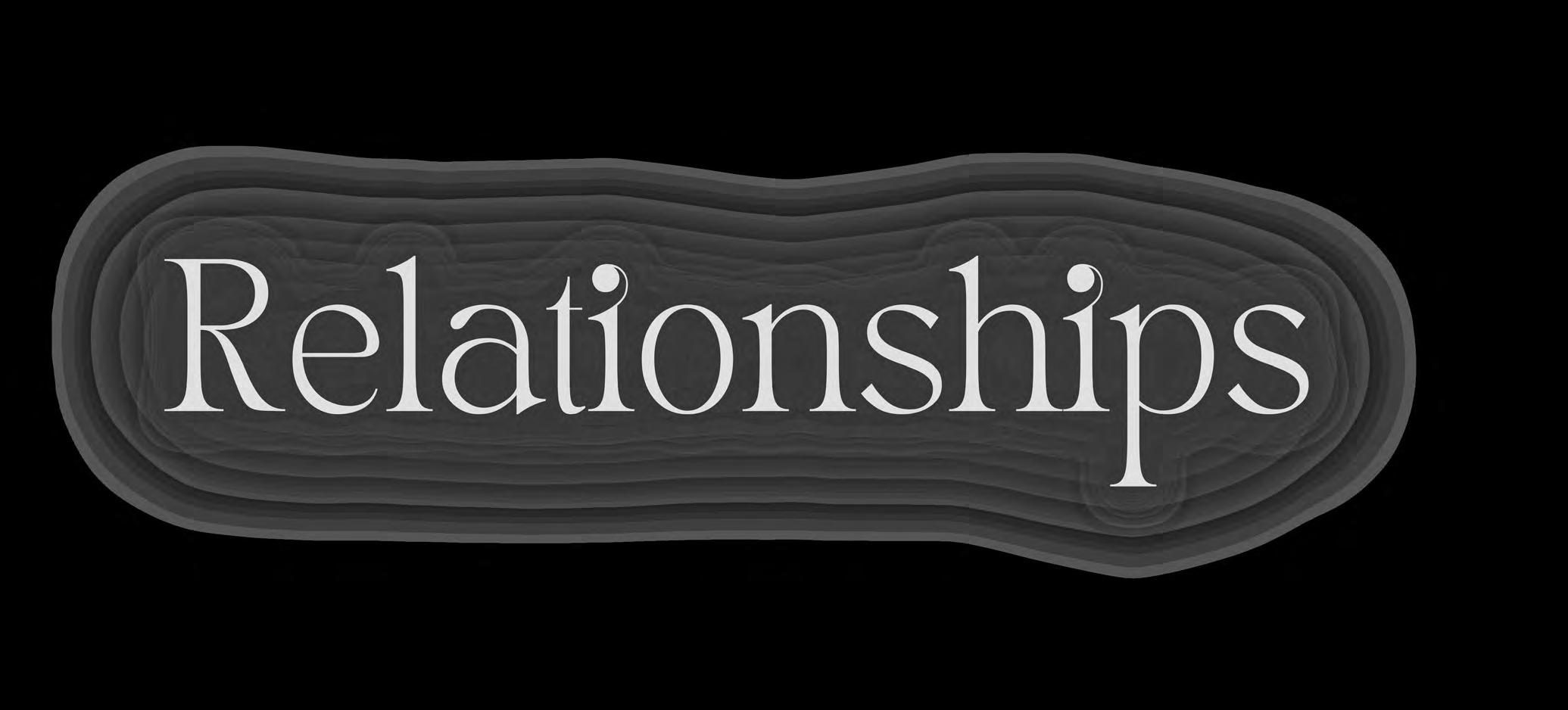




By Ascending Hearts
In my experience, most of the people I counsel are women. This is true for my professional consultations and those who follow my Instagram and seek help and advice. Typically, women are
more often the victims rather than the perpetrators in this matter: the lack of emotional Responsibility.
Emotional Responsibility refers to the awareness and understanding of the
impact of one's emotions, actions, and behavior on others, particularly in personal relationships. I I recently went through such a situation. The kind that leaves you feeling unwell, even physically ill. After nearly a year of dating, my exboyfriend, who had even met my parents, seemed tired of me. He lost interest. Sure, these things happen. It's not because he liked me once that he has to love me forever. After all, dating is indeed about testing the relationship.
The problem wasn't the breakup but how it happened. He just freaked out when I tried, and I emphasized, to talk to him about it. He pretended to be deeply hurt by something I didn't even say. He claimed that it was so serious (my unspoken words) that after our first fight, he "wasn't even going to talk to you anymore; I'm only talking because you reached out" (sic).
He was a man I loved. We made many plans together. I tolerated many of his faults, just as he did with mine. We had great moments, meaning we had a history. He ended it abruptly, feigning offense and
unwilling to meet so I could return his clothes, and he could give me back my building's remote control. It was as if I had never meant anything to him.
This is emotional irresponsibility. When someone suddenly treats you as if you don't exist. There's not even the consideration to end things clearly. I'm not talking about explaining things exhaustively or trying to save the relationship. If someone doesn't want to continue, that's their right. But to have a final conversation, to end things as friends, to look the other person in the eye and say, "I'm sorry, but I don't want this anymore." That's sheer cowardice!
I would never do that. But many people do. I counsel many women who go through similar situations, and I believe men do, too (although they tend to seek therapy less in these situations than women). This is emotional cowardice. It's treating the other person like garbage. In my case, it hurt more than if I had been physically hit – keeping things in perspective. The disregard, the mysterious way he responded to my futile attempts to end things

amicably. And I, who am the kindest woman on the planet.
A SIGN OF SOUL IMMATURITY?
Yes!
Emotional irresponsibility can often be a manifestation of immaturity. Emotional immaturity is characterized by an inability or unwillingness to manage one's own
emotions and to understand and consider the feelings of others. This can manifest in various forms of emotional irresponsibility, such as:
Avoidance of Accountability: Refusing to take responsibility for one's own emotional reactions and actions and instead blaming others or external circumstances.
Poor Communication: Struggling to express one's emotions in a healthy

way or not communicating feelings at all, leading to misunderstandings and unresolved conflicts.
Lack of Empathy: Failing to recognize or consider the emotional needs and boundaries of others, which can result in hurting or neglecting others' feelings.
Impulsiveness: Acting without considering the consequences of one's actions on oneself and on
others, often driven by immediate emotional responses.
Difficulty in Managing Conflicts: Inability to constructively resolve disagreements, often resorting to passive-aggressive behavior, manipulation, or escalation rather than seeking understanding and compromise.
Resistance to Growth: Avoiding selfreflection and not learning from past

emotional experiences, leading to repeated patterns of harmful behavior.
The lesson from all this is: take care of your heart.
We never really know who we're dealing with. In the beginning, everything is rosy, but a person's true nature gradually shows. Run
for the hills if any signs of neglect appear in your relationship. It's getting really ugly.
On the other hand, let's be careful with other people's hearts. It's perfectly okay if you don't want to spend the rest of your life with someone, but understand that the other person, as part of the relationship, at least deserves your

affection and attention. You don't have to overdo it or keep explaining yourself if that's not what you want. But be aware that there is a heart on the other side that deserves kindness and respect. Just that!
Emotional Responsibility is crucial for healthy, respectful, and fulfilling romantic, familial, spiritual, or professional relationships. It involves
a balance of attending to one's own emotional needs while also being considerate and responsive to the emotional needs and well-being of others.
No one is an island. Any energy we send into the Universe comes back to us at some point. Be careful! Be kind and don't do to others what you wouldn't want done to you.







philosophy, spirituality, and philosophy, spirituality, and philosophy, spirituality, and theoretical insights to understand theoretical insights to understand theoretical insights to understand existence beyond physical existence beyond physical existence beyond physical phenomena. phenomena. phenomena.


By OMTimes
Moon in the Astrological Houses refers to the influence of the Moon's position within the twelve houses of an astrological chart on a person's emotions, behaviors, and various aspects of their life. In astrology, each house represents different areas of life, and the Moon's presence in each house is believed to bring specific influences:

The transit of the Moon through the astrological houses indicates the need for special attention to the home, the domestic environment, and matters related to the family. During this period, many people's lives can be marked by unhappy moments, mainly related to the loss of family members or the need to live alone.
The Moon encourages people to be more peaceful and introverted, especially valuing intimacy and recognizing their worth. The period is unlikely to be favorable for public actions and large exposure. The introversion of the period is appropriate and advisable to be used mainly to provide well-being to each individual's inner self.

The harmony between body and soul should be observed with attention. Care must be taken to avoid diseases and drastic mood changes.
A peaceful and introverted nature marks the presence and transit of the Moon in house one, but one that does not give up the recognition of its value. Despite the introspection, the period calls for public exposure, even if cautiously. With this exposure, family relationships and humanitarian activities strengthen and provide well-being to others. The period is favorable for nurturing the soul.
The keyword of Moon in House 1: relationship
House 2 brings to the moment a state of accidental exaltation. The period highlights the need for security provided by money and the possession of material goods. It is a time when greater importance is given to financial and material issues, but dealing with the related difficulties is necessary. The period is favorable for working on the ability to deal with business; one needs to be even more astute and calculative during this time.

The keyword of Moon in house 2: skill
The need to communicate becomes even more evident in this period of the Moon. Investing in travel, media, and education is necessary to keep communication in the spotlight. Taking new courses and an interest in new readings can be an important source of learning. The period shows that it is important to be constantly learning and transmitting information and knowledge to others. Intelligence and intellectuality gain prominence throughout this transit of the Moon.
The keyword of Moon in house 3: communication
In this period, the Moon is associated with the sign of Cancer, further highlighting feelings' strength. The search for autonomy is set aside, and the period becomes favorable for carrying out activities at home, preferably related to one's business or family. The connection with the family becomes even stronger at this time, and the comfort of home becomes even more important. Care must be taken with situations

that may remind one of problems experienced in childhood.
The keyword of Moon in house 4: Memory
The moment will bring strong emotions, mainly linked to romance. The period is favorable for singles and may be marked by numerous romantic affairs. The attraction to the young, new, and unknown strengthens and motivates some attitudes. The moment is also one of great attachment to children, ideal
for building even more effective bonds and further tightening the relationship. The period also favors affection for pets.
The keyword of Moon in house 5: Emotional
The period is marked by a strong impulse to care for and meet the needs of others. Because of this, it is important to invest mainly in assistance activities. The period is also quite favorable for everything related to emotional appeal. Through this appeal, many will
be able to adapt better to the environment.
The keyword of Moon in House 6: paternalism
Everyone highlights and values companionship when the Moon passes through house 7. Dedication and pleasing others become even more fundamental for any relationship. During this period, many can give up their interests in search of others' approval. The difficult temperament of many tends to dissolve, facilitating better understanding among people.
The keyword of Moon in house 7: impartiality
Money and prestige gained prominence and evidence in this period. This transit of the Moon increases some people's instinctive and reactive behavior, so care must be taken with possible damages and losses that these attitudes may cause. Sensuality becomes an important factor in

life, and great successes can be achieved based on the valorization of this sensuality.
The keyword of Moon in house 8: inspiration
The moment is very favorable for deep thinking and considering the deeper aspects of life. This period of the Moon tends to make people somewhat restless, favoring changes of residence. The time is very favorable and beneficial for those who dislike setting roots and prefer to travel the world.

The keyword of Moon in house 9: Diversity
The moment is conducive to investing in various forms of exposure. Visibility becomes grand due to a previously emerged need. Unpleasant events in childhood may have generated this need. To deal with this uncomfortable past, taking advantage of the period to value oneself and achieve public recognition is necessary. The feeling of insecurity should be
compensated for with the strength applied in dealing with popularity.
The keyword of Moon in house 10: self-confidence
The need to have many people around favors friendships. The period is good for attending clubs and groups where affinities are valued. The difficulty in formulating plans for the future makes the period somewhat unstable. Therefore, attention must

be paid to one's real-life goals, and by giving this due attention, everyone will be able to organize and manage their movements and involvements.
The keyword of Moon in house 11: companionship
With a tendency towards seclusion, many will seek to hide. Therefore, the moment is auspicious for those who wish to isolate themselves. In this isolation, many
will find happiness and the ability to value their own life. Imagination tends to fuel the sense of creativity, leading to great poetic and artistic creations. Seclusion serves to recharge energies and aims to recover stress points that may later result in possible illnesses.
The keyword of Moon in house 12: recovery
Each position of the Moon highlights different aspects of life and personal development, as per astrological traditions.
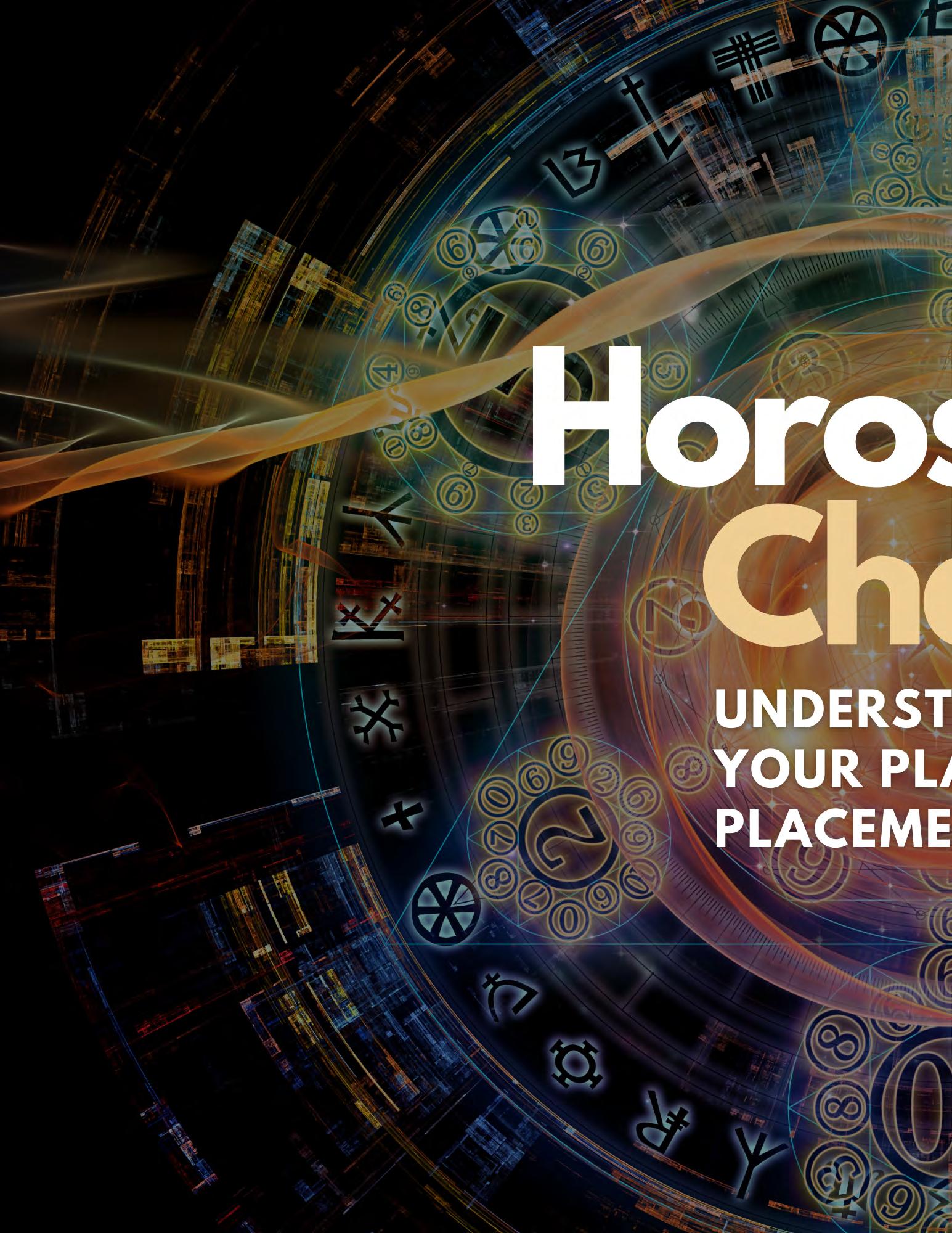





PersonalGrowthencompasses self-improvementandemotional, mental, andspiritualdevelopment, focusingonenhancingselfawareness,skills,health, andoverallwell-being.

By Humanity Healing
Imagine a life where wisdom, knowledge, empathy, and originality abound. In this life, you would understand the art of living with less yet feeling a sense of abundant richness. It's a life where
fundamental principles become clear, such as the importance of being true to oneself and the ability to apply this authenticity in daily life. Picture a society filled with evolved individuals, free from major problems.
In this galactic life: You would have access to a deeper understanding of the universe and life. Knowledge wouldn't just be about accumulating information but gaining profound insights that transform how you perceive and interact with the world. It will open us up to our galactic neighbors, to the energies and the life force energies that exist within the universes that we are all a part of - and they all are here, of course, supporting us in this transition for this aspect of our awakening. I hink that is going to be a big shift.
Christine McCormick Day
This is what we call a galactic life, and awakening to this life can be much simpler than you might imagine. Just follow the basic precepts we've outlined below:
When you understand that the spiritual is much greater than the material. When you stop buying so many things and are content with what you have, you magically realize that simplicity makes your life much lighter and more enjoyable.

You make better choices in your readings, your friendships, and all kinds of information you consume. Trivial things and silly conversations no longer interest you. Now, you only want things that can add to your knowledge and expand your mind.
When you're not content with just having a normal life and following

most people's steps, you seek a lifestyle and a purpose that make sense to you personally.
Your social life has completely changed, and you refuse to attend events just to make people happy. Now, you no longer care about what others think and act according to what you've always wanted, being much more original and truer to your thoughts and desires.
You have become more reclusive and enjoy being alone. In these moments, you connect with your innermost self and practice self-knowledge. This is where you find all the answers to your questions and the calm needed for your concerns.
You have come to like nature even more and feel an intimate
connection with plants and animals. It's as if, in contact with nature, you also come into contact with yourself.
Your diet has also changed, and now you eat much more fruits, vegetables, and legumes. You've left compulsive eating behind and are concerned with the quality of the food you consume. You have started to take care of your body and mind and understand that the fuel for your body should be natural foods.
You have taken the reins of your life and no longer play the victim. You've understood once and for all that your life is a result of your actions and choices and decided that you are the one in charge.
You have finally left the past behind and no longer dream about the future. You know that what matters is the present moment, and that's where you focus your attention.
Doing everything you can to enjoy the moment and not waste current opportunities.
Competing no longer makes any sense in your life. You respect and admire others, but you no longer spend time comparing yourself to anyone or wanting to be better than others. You've learned that what matters is to surpass yourself every day and thus become a better person.
Embracing this galactic life involves a profound shift in mindset and lifestyle, where the focus shifts from external validation and material accumulation to internal growth, spiritual understanding, and harmonious living with the environment. It's a journey towards a more mindful, fulfilling, and connected existence that aligns with the greater cosmos. This awakening is about personal transformation and contributing to a more conscious and aware global community.
Keep up the good work, if only for a while, if only for the twinkling of a tiny galaxy.
Wislawa Szymborska



By Cathedral of the Soul
The concept of non-action (Wu Wei) is one of the most misunderstood Taoist concepts in the West. Many researchers have mistakenly considered it a fatalism and a "philosophy of laziness," where passive acceptance of what happens and waiting for things to happen are the foundations. Nothing could be further from the truth.
The Tao is a constant non-action. That leaves nothing undone. Tao Te Ching, Chapter 37
Wu Wei symbolizes the acceptance of the flow of events and the attention to every small opportunity to change the course of this flow. We all know that circumstances lead us in a certain direction, but we can always make small alterations and course corrections within that direction.
Struggling against the current, rebelling against the direction our life is heading, often brings problems. Ancient Chinese wisdom held that understanding the flow of things and adapting to it is the first step in gaining control over it. By being aware of the direction we are following, we can foresee the possible course of events and take actions that lead us to a better situation.
Knowing how to accept and learning to guide are the seeds of non-action wisdom.
Develop the docility of the water that, instead of resisting obstacles, softly bypasses the river boulders.
Lessons from Water: Water takes the path of least resistance.
good is better. Knowing this, it takes the path of least resistance, not necessarily the shortest, but the most natural. On the shortest path, we complicate things, theorize, and spend energies that could be saved for continuation or new projects. Ego and anxiety convince us that the easiest paths are also the shortest, which is not always true. Therefore, pay attention to this lesson from water.
Water does not confront insignificant obstacles.
When the stream encounters a stone in its path, it doesn't become hysterical or paralyzed with fear. It doesn't waste energy or time on an insignificant stone. Water simply goes around the stone and continues on its way.
Water doesn't waste time arguing with obstacles. It simply bypasses them.
Water doesn't complicate its life. It follows the rule that the enemy of
Do not struggle. Go with the flow of things, and you will find yourself at one with the mysterious unity of the Universe.
Zhuangzi

Following the example of water, we should not waste our time on discussions that will lead us nowhere. Recognize the distractions that delay your projects and get rid of them. Circumvent them by almost ignoring them. Stay away from those who only know how to murmur, grumble, and complain about everything and everyone. Talking to them, and especially arguing with them, will not help at all in the realization of your plans.
The notion of Wu Wei and the concept of Yin/Yang form the foundation upon which the philosophy of Taoism applied to life is based. "Wu" can be
translated as "nothing" or "absence." "Wei," according to Alan Watts, one of the greatest scholars of Eastern philosophy, can also mean to be, to do, to practice, to create. However, in the Taoist context, it signifies interference or coercion. Therefore, Wu Wei means "non-interference." Some people who translate this term merely as non-action generate some misunderstandings.
In the action of no-action (wuwei), a cardinal aspect of the true creative process is set forth. In Wuwei, the mind is silenced, and the work is allowed to express itself.
John Daido Loori

Also, the men follow their course in life, moved by a force they cannot control: TIME. Time passes, days turn into years, and everyone feels this flow, whether in a hermitage in the Himalayas or in a car in New York. In this constant flow, humans confront numerous obstacles: illnesses, work pressures, overdue bills, stubborn children, and lack of freedom. These obstacles, like all others, are faced as a true war, causing depression, fatigue, migraines, cardiovascular diseases, and who knows what else.
I don't think this is anything new. Since man has existed, he has faced many obstacles, and the Taoists
discovered a way to overcome them as water does: Wu Wei.
Wu Wei is non-interference with the flow of life. Time flows, and with it, we face various obstacles. Most of them dissolve on their own over time (although we worry a lot before that). How often do we worry about matters beyond our reach or where worry take the place of serious consideration that could resolve the issue? How much-wasted energy and how much stress is generated? The Taoist attitude is to set aside useless worries and solve the problem in an organized way or then wait for the solution to come by itself.

Zhuangzi told the story of a drunkard who fell out of a moving carriage without a scratch, whereas another person might have died. He suffered no harm because he wasn't selfconscious, nor did he stop to think about what could happen with the fall. Similarly, the more you dwell on a problem, the worse it gets. As an example of application, we can mention Tai Chi Chuan and Aikido martial arts. Although they don't oppose force with aggression, they can master any opponent without the need to harm them. This can only
be achieved through the application of Wu Wei.
These Taoist arts don't initiate the attack but wait for the opponent's movements and let them guide them to the best form of defense.
In the Taoist classic "Text on Tai Chi Chuan" by Wang Zongyue, the following passage is found: "If he (the opponent) moves quickly, respond quickly; if he moves slowly, imitate him." Similarly, if he advances, we retreat, and vice versa. The same attitude should be maintained in

everyday life. To carry out a project, one must wait for the opportune situation, or we are destined to fail.
Do not struggle. Go with the flow of things, and you will find yourself at one with the mysterious unity of the Universe.
Zhuangzi
This attitude of waiting for a favorable time is extensively discussed in the I Ching, the Book of Changes, as in the following passage: "In its own time, you will see that credit is given
to you. Supreme success is achieved through perseverance (in current conduct)" — Hexagram 49, Revolution.
Waiting for the right time for an achievement or a problem to resolve itself is not easy because we always want absolute control over everything. But we are in a boat at the mercy of the current, and it will be less laborious if we avoid rowing against it. When faced with a bad time, remember that the Yin and Yang cycles always alternate, and there is an hour of radiant light for every hour of darkness.



A comprehensive guide covering how-to books and publishing genres, offering insights on writing, self-publishing tips, industry trends, and genre-specific advice for aspiring authors.


By iSpirit Publishing
Crafting Your Unique Book of Memories: The Art of Your Literary Fingerprint
When you embark on the journey of writing a memoir, you are not merely penning down a sequence of events; you are imprinting your unique literary fingerprint on the pages of history. Your manuscript becomes a vessel carrying your life experiences, whether they resonate with thousands globally or touch the hearts of a select few. This is the essence of what makes your book of memories unique: it's a window into

your soul, offering glimpses of your joy, your sorrows, your creative flair, or even your moments of folly.
Your memoir is an intimate dance of words, a style that is innately yours – singular, exclusive, and authentic. It's a literary fingerprint that distinguishes your narrative from any other. But why embark on this journey of memoir writing? The simple answer is: Why not? Crafting a
memoir is not just about storytelling; it's about sharing a piece of yourself with the world, immortalizing your experiences in the annals of literature.
Your literary style should leap off the pages or computer screen when writing your story. It should be bold, almost "exhibitionist" in nature, demanding attention and setting your work apart. This unique

style flows from your soul, coloring every word and sentence, even when addressing themes explored repeatedly by others. However, don't mistake literary style for something that effortlessly spills out in your first draft. Often, it requires meticulous crafting and polishing to shine truly.
One of the most authentic ways to bring your literary style to the forefront is to write about what you deeply know and feel. This means delving into those experiences that pulse at the very core of your being, the ones you passionately want others to understand and reflect upon. When you write about matters
that stir your heart and soul, your literary style naturally surfaces, becoming the most captivating element of your narratives, be it in novels or chronicles.
By definition, memoir demands a certain degree of introspection and self-disclosure: In order to fully engage a reader, the narrator has to make herself known, has to allow her own self-awareness to inform the events she describes.
Caroline Knapp
Your book of memories, your memoir, is more than a collection of past events; it's a testament to your life, thoughts, and feelings. It’s a journey through time, seen through the
lens of your unique perspective. By embracing your individuality and expressing it through your literary style, you create a work that is not only a reflection of yourself but also a gift to the world — a piece of art that can inspire, move, and connect with people across different walks of life. Remember, every word you write contributes to the intricate tapestry of your literary fingerprint, making your memoir an unparalleled work of art.
Have the courage to Cut out what is unnecessary — Your eloquence needs to serve your ideas' purpose — crown them, not confuse them. However good it is, if a sentence is not essential to the descriptive purpose, have no mercy: eliminate it. Unnecessary ideas were made to beheaded. "
Unfortunately, some new authors try to sound like your favorite writers. And this sucks, as it pollutes your

identity and obscures what you have best. Don't try to look like other writers who have impacted your life.
One of the most challenging aspects of writing a memoir is finding your own voice, and you should be very careful about being influenced by someone else's voice.
Jeannette
Walls
Please don't do it, even with those who inspired you to make writing a career.
Even though some Literary Styles may be influenced, do not let someone else's Style take the place of natural beauty. Your writing is unique, and so is what your perspective can take on.


Book Spotlight showcases specific books, highlighting their themes, significance, and impact, aiming to promote readership and appreciation in diverse literary communities.




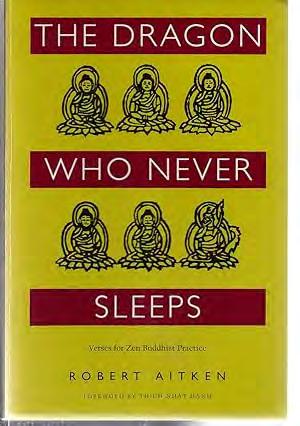
TheDragonWhoNeverSleeps is a collection of gathas-poetic vows for daily living in verse form-that are similar to prayers.
By Marguerite Dar Boggia



The Dragon Who Never Sleeps: Verses for Zen Buddhist Practice by Robert Aitken is a profound and enriching collection of verses designed to guide and inspire Zen Buddhist practitioners.

Published in 1992 and reissued in subsequent years, this book remains a vital resource for those seeking to deepen their practice through poetic reflectionandcontemplation.
Robert Aitken, a revered Zen teacher andco-founderoftheDiamondSangha, offersinTheDragonWhoNeverSleeps auniquecompilationofgathas—short versestraditionallyusedinZenpractice. Thesegathasareintendedtoberecited or contemplated in various aspects of daily life, turning ordinary moments intoopportunitiesformindfulnessand awakening. The book is divided into severalthematicsections:
Verses of Waking and Sleeping:
This section provides gathas for beginning and ending the day, emphasizing the Zen practice of mindfulness from the moment one awakens to the time of rest.
Verses for Daily Activities: Here, Aitken offers verses for everyday tasks such as eating, bathing, working, and interacting with others.Thesegathasaimtoinfuse routine activities with a sense of presenceandawareness.
Verses for Special Occasions: This part includes gathas for significant life events and rituals, such as birthdays, anniversaries, and ceremonies. Aitken encourages practitioners to mark these moments with intentionality and gratitude.



VersesforSocialandEnvironmental Awareness:Aitkenexpandsthescope of Zen practice to include mindfulness in social and environmentalcontexts.Thegathasin this section address issues like compassion for all beings, ecological mindfulness, and social justice, reflectingtheengagedaspectofZen Buddhism.
Verses for Challenging Times: This section recognizes life's inevitable difficulties and provides verses for copingwithchallengessuchasillness, loss,andconflict.Aitken’swordsoffer solace and strength, encouraging practitioners to face adversity with equanimity.
AccessibleandPractical:Oneofthe book’s greatest strengths is its accessibility. Aitken’s gathas are concise and straightforward, easily incorporatedintodailyroutines.The versesarewritteninplainlanguage, free from complex jargon, making thebookapproachableforbeginners andseasonedpractitioners.
Depth and Wisdom: Despite their brevity,theversesareimbuedwith deep wisdom. Aitken skillfully captures the essence of Zen teachings in just a few lines, reflecting core principles such as mindfulness, compassion, and impermanence. His commentaries enhance understanding, providing contextandelucidatingthepractical applicationofeachgatha.

Eachverseisaccompaniedbyabrief commentary from Aitken, offering insights into its application and significancewithinZenpractice.Here aresomeofourobservations
IntegrationofPracticeandLife:Aitken’s focusonintegratingZenpracticeintoall daily life is particularly valuable. The gathas remind practitioners that mindfulnessandspiritualawarenessare notconfinedtothemeditationcushion but can be woven into every moment andactivity.


This holistic approach encourages a seamless blending of practiceandeverydayliving.
Emphasis on Engaged Buddhism: Aitken’s inclusion of gathasforsocialandenvironmentalmindfulnessreflectsa modern and engaged approach to Zen Buddhism. He addresses contemporary issues with verses that inspire practitioners to cultivate awareness and responsibility toward the world around them. This aspect of the book resonates with those seeking to apply their practice to broadersocialandecologicalconcerns.
Support for Difficult Times: The verses for challenging times provide comfort and guidance during struggle. Aitken’s compassionate and empathetic approach offers reassurance, helping practitioners navigate hardships with mindfulnessandacceptance.



YOU CAN’ T CHANGE THE PAST
But You Can Create the Future






OMTimes Social Media TV Distribution And syndication Excellence & Concierge Service
Tv & Radio Integration






